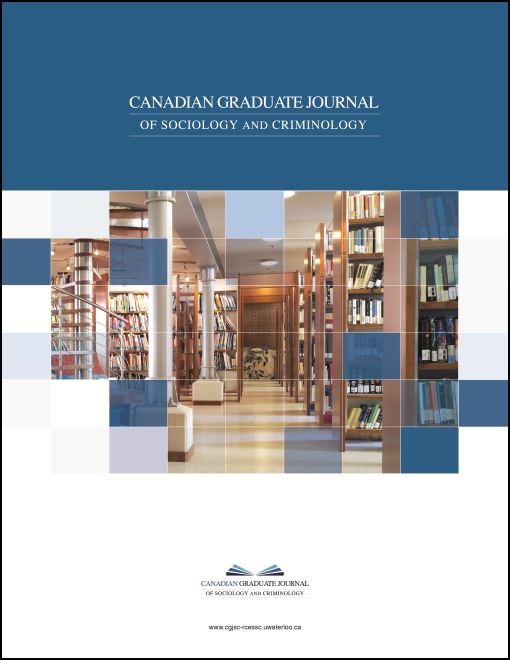Le projet de loi antiterroriste canadien : une sélection sécuritaire
DOI:
https://doi.org/10.15353/cgjsc.v2i2.3768Keywords:
Discours, Parlementaires, Terrorisme, Construction sociale, CanadaAbstract
Notre définition du problème du terrorisme détermine la manière de concevoir les solutions à cette problématique. Ainsi, la perception que des mesures sécuritaires sont adéquates, nécessaires, efficaces, proportionnelles ou, au contraire, qu’elles sont abusives ou déséquilibrées, est largement tributaire de cette composante définitionnelle. Dans cet article, nous identifions comment les parlementaires canadiens ont défini la menace terroriste dans le cadre des débats sur le projet de loi antiterroriste canadien, débats qui ont eu lieu du 15 octobre 2001 au 18 décembre 2001. Mais plus encore, nous examinons l’impact que cette composante définitionnelle a eu sur leur détermination de ce qui est justifié comme solution au problème du terrorisme. Cet article traite ainsi de la sélection sécuritaire qui s’est opérée dans le projet de loi C-36, c’est-à-dire la stratégie sécuritaire générale qui a été priorisée. Nous qualifierons la forme particulière que prend cette sélection en la situant au sein des alternatives proposées qui ont été laissées dans l’ombre, dans l’objectif de mieux comprendre ce choix sécuritaire et ses implications.
The way in which terrorism is defined as a public problem determines how solutions are designed to address this problem. Thus, the perception that security measures are adequate, necessary, effective, proportional or how they are perceived unfair or unbalanced, is largely dependent on a definitional process. In this paper, we identify how Canadian parliamentarians have defined the problem of terrorism in the context of the discussions on the proposed Canadian Anti-Terrorism Bill, which took place from October 15th, 2001 to December 18th, 2001. Furthermore, we examine the impact that these different discursive constructions had on the solutions proposed by parliamentarians, and on the solutions that are reflected in the proposed measures and the Bill. Therefore, this article discusses the selection process that took place in the creation of Bill C-36, and thus discusses the overall security strategy that has been prioritized in it. We describe the particular form of this selection by placing it within the proposed alternatives that were rejected, with the aim of better understanding the choices made in the creation of Bill C-36 and their implications. We will conclude with a discussion on the effects of power of the discourses that were chosen and instituted in the Canadian Anti-Terrorism Bill.

